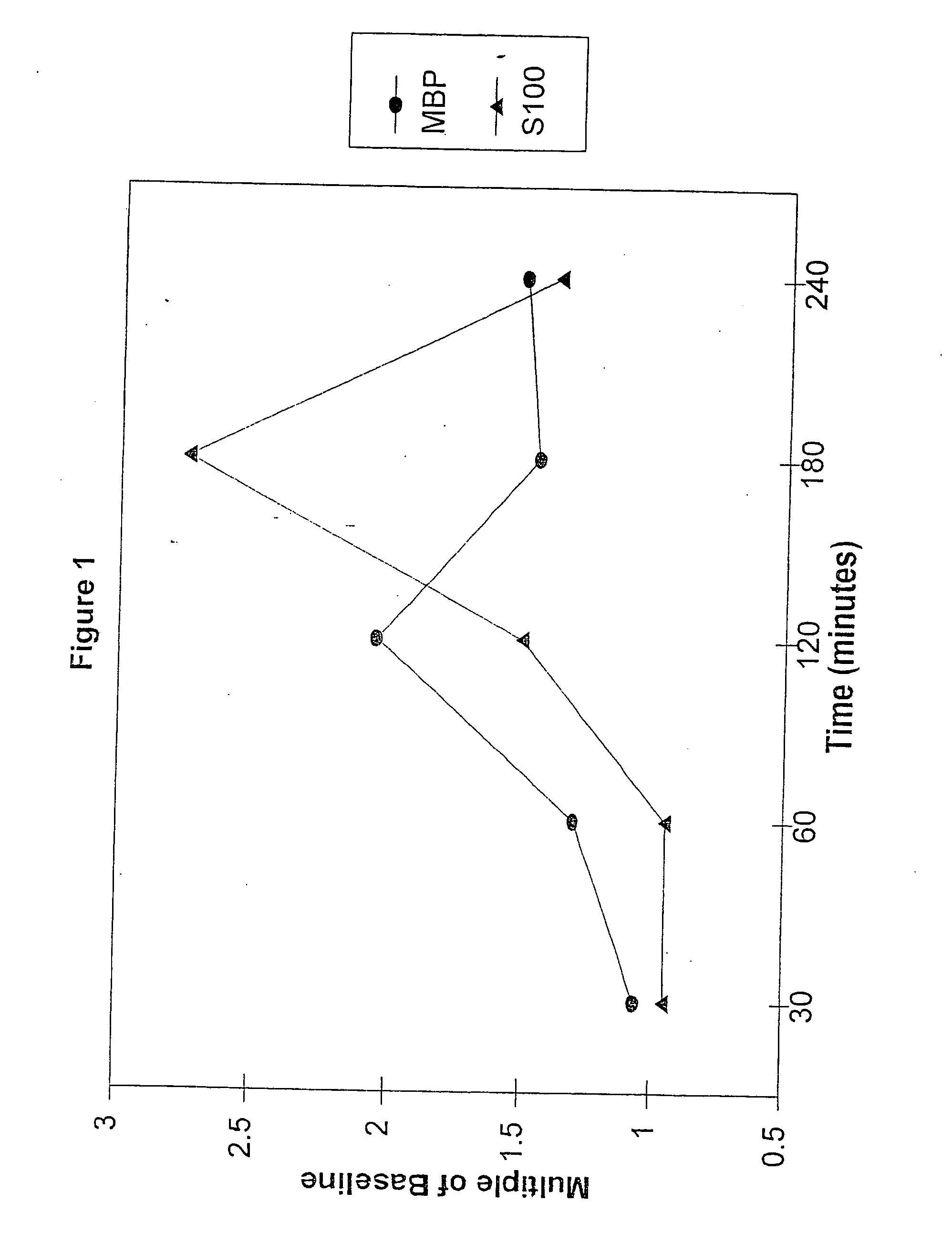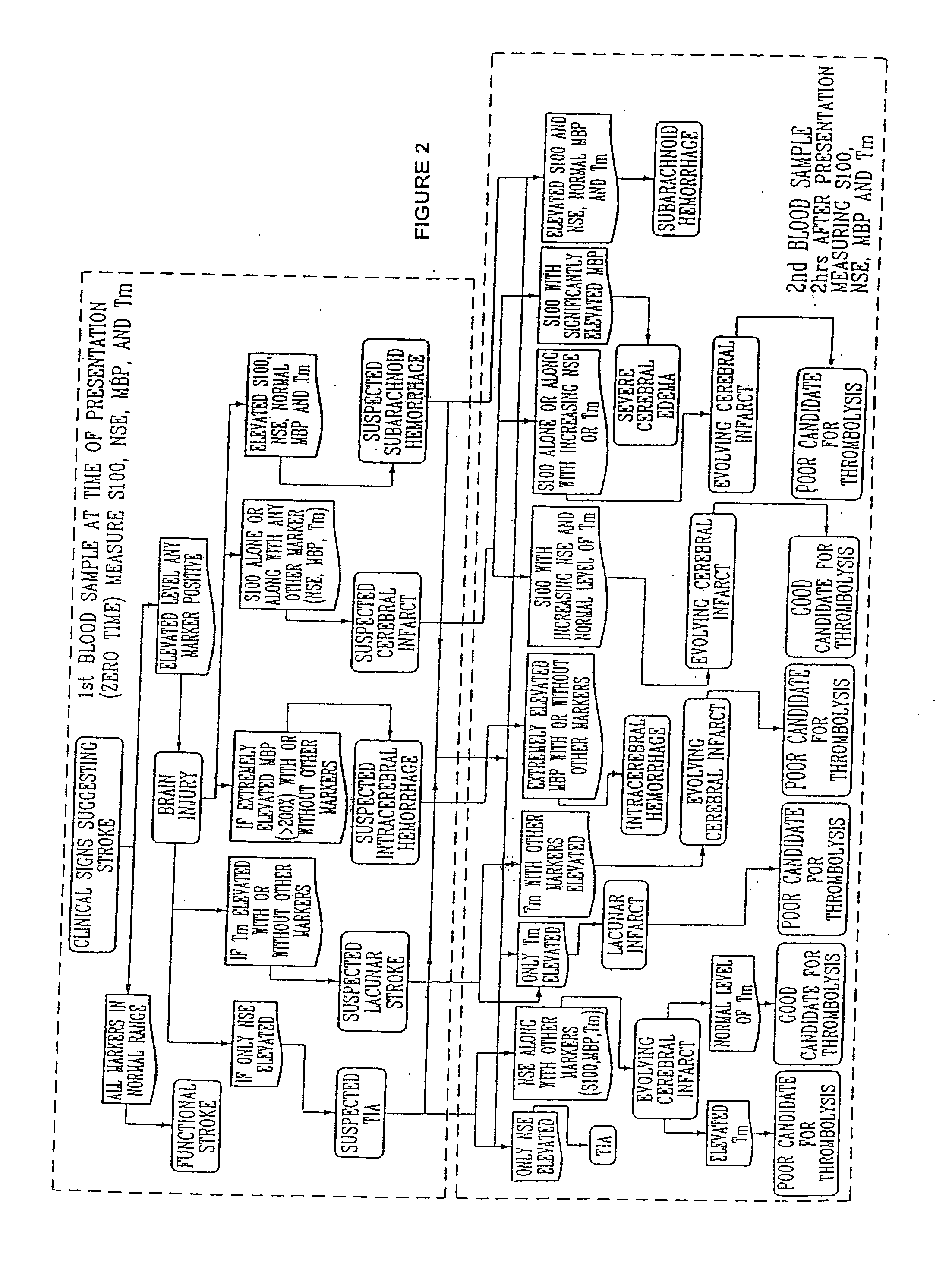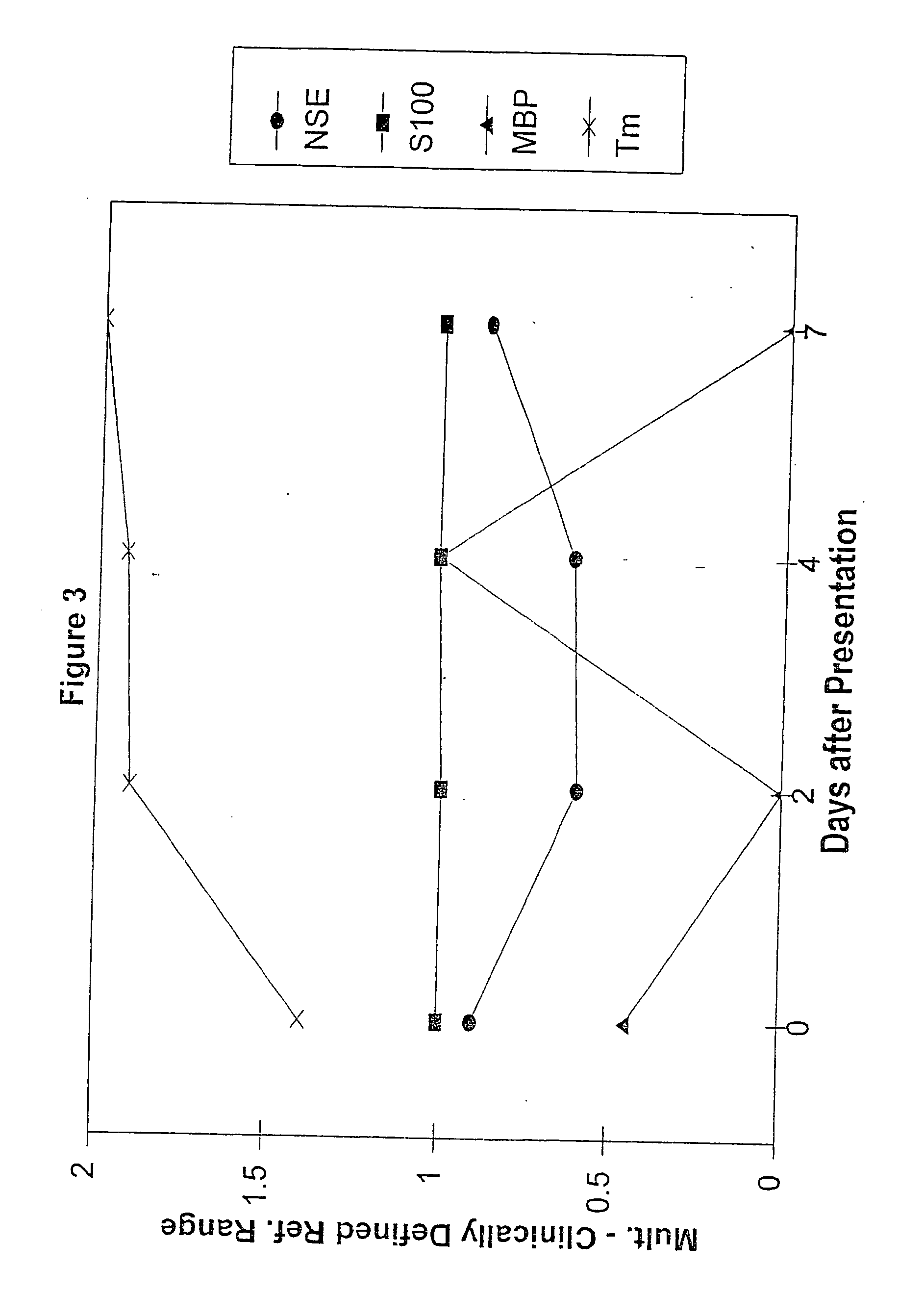Method for diagnosing and distinguishing stroke and diagnostic devices for use therein
a diagnostic device and stroke technology, applied in the direction of diagnostics, biochemistry equipment and processes, material testing goods, etc., can solve the problems of affecting the health of human beings, affecting the selection of patients, so as to improve the selection of patients.
- Summary
- Abstract
- Description
- Claims
- Application Information
AI Technical Summary
Benefits of technology
Problems solved by technology
Method used
Image
Examples
example
[0049] A prospective observational pilot study was carried out at two tertiary care hospitals. The study evaluated thirty three patients admitted with a clinical and computed tomographic (CT) diagnosis of acute ischemic stroke. The mean age of the patients presenting with stroke was approximately 66 years (66.4±16.4) with an age range of from 27 to 90 years. The mean delay between the onset of symptoms and presentation to the hospital was 22 hours with a range of from 1 to 72 hours. Admission National Institutes of Health Stroke Scale and Discharge modified Rankin scale scores were recorded. Blood samples were obtained on days 1 (presentation), 3, 5 and 7 at one hospital and days 1, 2 and 3 at the second hospital. All blood samples
TABLE IINSE, S100, MBP ND Tm CONCENTRATIONSIN CLINICAL SERUM SAMPLESNSES100MBPTm(ng / mL) +(ng / mL) +(ng / mL) +(ng / mL) +CODE #AGEGENDER2SD = 9.92SD = 0.022SD = 0.022SD = 73SM-1 D142Female8.3420.0280.00043.535SM-1 D313.3001.098ND61.946SM-1 D59.6220.0600.23865...
PUM
| Property | Measurement | Unit |
|---|---|---|
| molecular weight | aaaaa | aaaaa |
| molecular weight | aaaaa | aaaaa |
| molecular weight | aaaaa | aaaaa |
Abstract
Description
Claims
Application Information
 Login to View More
Login to View More - R&D
- Intellectual Property
- Life Sciences
- Materials
- Tech Scout
- Unparalleled Data Quality
- Higher Quality Content
- 60% Fewer Hallucinations
Browse by: Latest US Patents, China's latest patents, Technical Efficacy Thesaurus, Application Domain, Technology Topic, Popular Technical Reports.
© 2025 PatSnap. All rights reserved.Legal|Privacy policy|Modern Slavery Act Transparency Statement|Sitemap|About US| Contact US: help@patsnap.com



